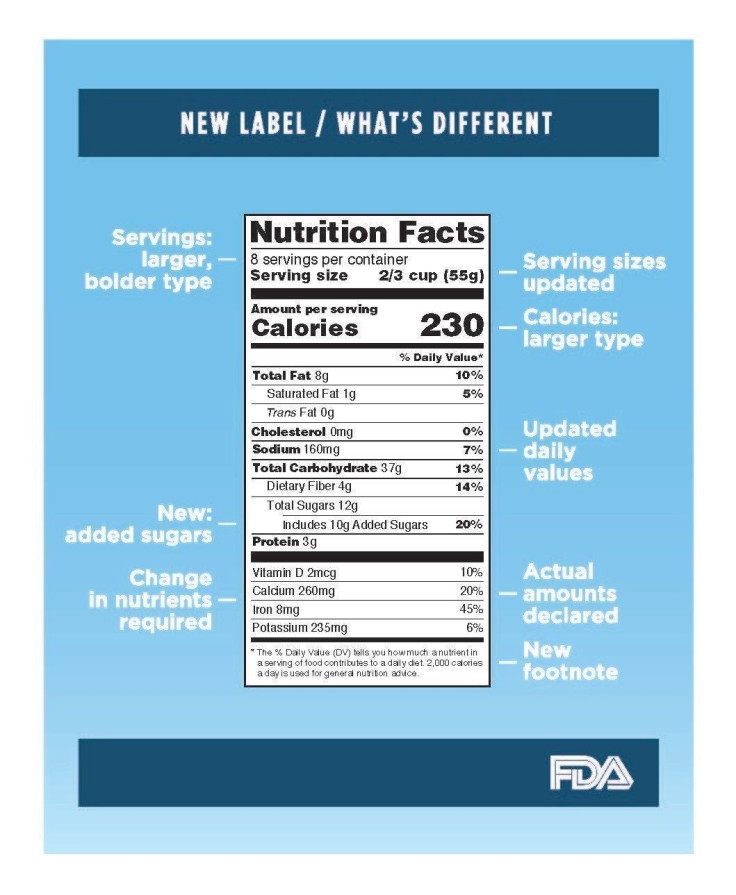FDA Updates Nutrition Facts Label On Packaged Foods For First Time In 20 Years; Will It Curb Obesity Epidemic?

The nutrition facts label was first introduced in 1993 so that consumers could easily maintain a healthy dietary plan based on well-informed decisions regarding what they eat. The Food and Drug Administration (FDA) proposed two rules that would update the label in March 2014 followed by a supplemental proposed rule in July 2015. Less than a year later, the FDA has announced that it will be updating the label’s design to be more visible to modern consumers.
"I am thrilled that the FDA has finalized a new and improved nutrition facts label that will be on food products nationwide," said first lady Michelle Obama in a statement. "This is going to make a real difference in providing families across the country the information they need to make healthy choices."

One of the major changes included in the update was to increase the type size of both the calories and the serving size, which the FDA called two important elements when making informed decisions about our food. Manufacturers are also now required to list servings that reflect the actual amount of food people currently eat. The Nutritional Labeling and Education Act requires that servings be based on the amount of food people actually eat, something that has changed significantly in the last two decades.
Another major change is the addition of a line for added sugars. Nutrition experts have been split since the FDA first announced that it would be requiring a declaration of the grams and a percent daily value for added sugars. Some thought it would only confuse consumers while others said it would help them identify how much sugar was in certain food. The agency reviewed thousands of public comments after the announcement in an effort to find the best way for manufacturers to communicate sugar content.
"For more than 20 years, Americans have relied on the nutrition facts label as a leading source of information regarding calories, fat, and other nutrients to help them understand more about the foods they eat in a day," said FDA Commissioner Robert Califf. "The updated label makes improvements to this valuable resource so consumers can make more informed food choices — one of the most important steps a person can take to reduce the risk of heart disease and obesity.”
Although listings for total, saturated, and trans fats will all continue to be required, calories from fat has been removed after research found that the type of fat is more important than the amount. Vitamins A and C will only be listed voluntarily since these deficiencies are rare, while vitamin D and potassium declarations will now include the actual gram amount as well as percent daily value since many don’t get enough of these nutrients. A footnote has also been added to explain percent daily value.
All of these changes have been made with help from Institute of Medicine recommendations and the 2015-2020 Dietary Guidelines for Americans. Manufacturers with more than $10 million in annual food sale will be required to have new labels by July 26, 2018.
Published by Medicaldaily.com



























